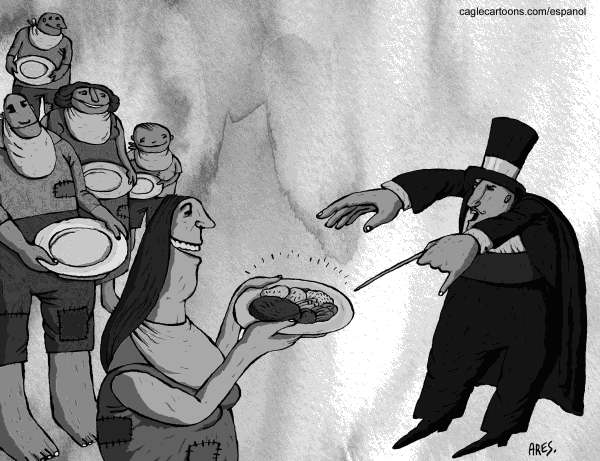Search
Democracy Links
Member's Off-site Blogs
no less a citizen .....

In writing Diet for a Small Planet, I learned one simple truth: Hunger is not caused by a scarcity of food but a scarcity of democracy. But that realization was only the beginning, for then I had to ask: What does a democracy look like that enables citizens to have a real voice in securing life's essentials? Does it exist anywhere? Is it possible or a pipe dream? With hunger on the rise here in the United States - one in 10 of us is now turning to food stamps - these questions take on new urgency.
To begin to conceive of the possibility of a culture of empowered citizens making democracy work for them, real-life stories help - not models to adopt wholesale, but examples that capture key lessons. For me, the story of Brazil's fourth largest city, Belo Horizonte, is a rich trove of such lessons. Belo, a city of 2.5 million people, once had 11 percent of its population living in absolute poverty, and almost 20 percent of its children going hungry. Then in 1993, a newly elected administration declared food a right of citizenship. The officials said, in effect: If you are too poor to buy food in the market - you are no less a citizen. I am still accountable to you.
The new mayor, Patrus Ananias - now leader of the federal anti-hunger effort - began by creating a city agency, which included assembling a 20-member council of citizen, labor, business, and church representatives to advise in the design and implementation of a new food system. The city already involved regular citizens directly in allocating municipal resources - the "participatory budgeting" that started in the 1970s and has since spread across Brazil. During the first six years of Belo's food-as-a-right policy, perhaps in response to the new emphasis on food security, the number of citizens engaging in the city's participatory budgeting process doubled to more than 31,000.
The city agency developed dozens of innovations to assure everyone the right to food, especially by weaving together the interests of farmers and consumers. It offered local family farmers dozens of choice spots of public space on which to sell to urban consumers, essentially redistributing retailer mark-ups on produce - which often reached 100 percent - to consumers and the farmers. Farmers' profits grew, since there was no wholesaler taking a cut. And poor people got access to fresh, healthy food.
- By John Richardson at 21 Sep 2010 - 8:47pm
- John Richardson's blog
- Login or register to post comments
Recent comments
3 min 7 sec ago
2 hours 38 min ago
6 hours 3 min ago
6 hours 6 min ago
8 hours 48 min ago
8 hours 51 min ago
10 hours 36 min ago
10 hours 50 min ago
10 hours 56 min ago
20 hours 59 min ago